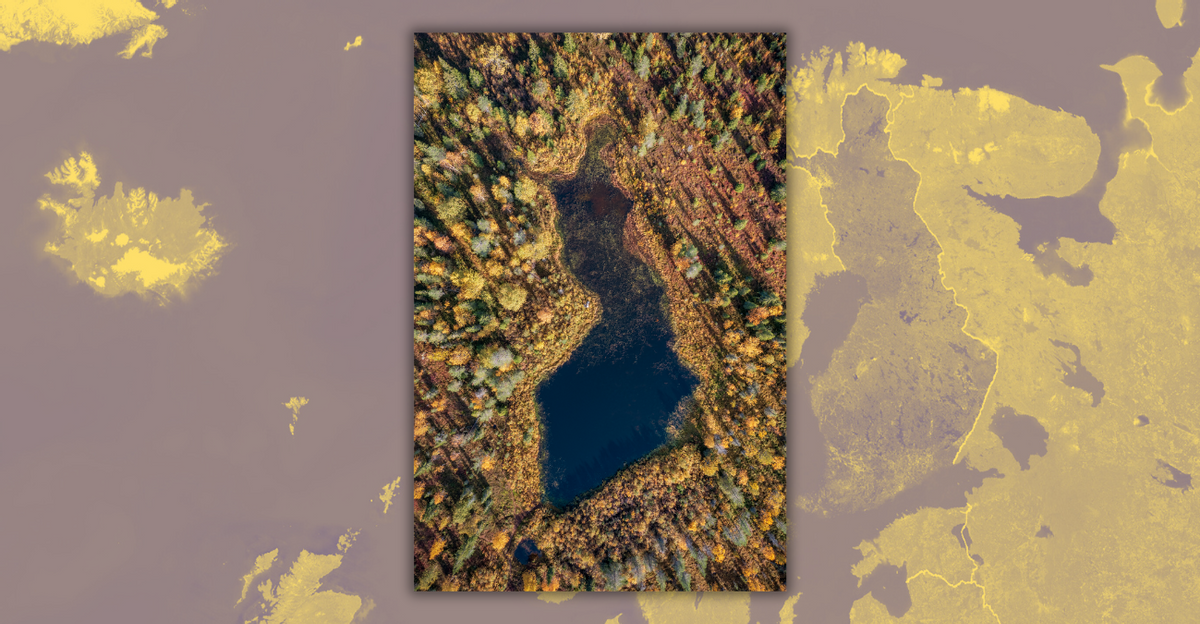Fact Check: Here's The Story Behind That Supposed Finnish 'Lake' Shaped Like Finland

Claim:
A lake in Finland is shaped like Finland itself.
Rating:
Context:
The lake is not natural, and it was explicitly designed to look like the shape of Finland.
Social media accounts and websites dedicated to quirky travel content often share an image of a small body of water — Lake Neitokainen — that appears to be shaped just like the nation in which it resides: Finland.

While use of the word "lake" may be a stretch, there is indeed a human-made body of water in a desolate and sparsely inhabited part of northern Finland that was designed to be a 1:10,000 model of Finland itself.
More accurately described as a pond, Lake Neitokainen was to be the centerpiece of a tourist village that was never built. It can be viewed on Google Maps:

In the late 1980s, a booming economy and interest in arctic tourism and skiing led the company Polartrio to develop land in the Lappland region of Finland — an area well above the Arctic circle. As reported by the Finnish outlet Veikkaus in 2015, Polartrio had plans to build a hotel and dozens of holiday cabins for skiers and tourists.
The primary construction manager for the project, Esko Sääskilahti, described the process behind modifying an existing pond in the area, noting that the whole project took only a week to complete (Translated by Google):
On his free evenings, [Sääskilahti] looked at the site plans of the holiday village and thought about what could be done with the planned pond in the middle of the village. Sääskilahti began to stretch it into a lake. ...
When Polartrio finally approved Sääskilahti's Suomi plan, a week was given to build the lake. Sääskilahti drew a line from Porvoo to Nuorgam and calculated a ratio of one to ten thousand as the appropriate size for the lake.
All you needed to outline the pool was a tape measure, a prism and a few sticks. The lake was built in a week with two excavators and the help of a few men in late summer 1991. It became 116 meters long and one meter deep.
By 1991, Finland's economy had plunged into a full-blown depression, decimating the tourist industry and the demand for Arctic resorts. The area surrounding the lake was, beginning in 1991, inhabited by a group of European-descended, self-described Indians who belonged to a faux-naturalist movement known as the Iriadamant.
The group was deported in 1993, and the land — besides the pond-turned-lake — remained undeveloped at the time of this reporting. "Sometimes the floods stretched the borders a little towards Russia and Sweden. But it looks like it will stay there," Sääskilahti told Veikkaus in 2015.
Because photos show an actual body of water in Finland that matches the political borders of Finland, and because its existence and story has been well-documented, we rate the claim as "True."
Sources:
Herva, Vesa-Pekka, et al. "'Indians' in Lapland: The Iriadamant Community, Monocultural Ethos and the Materialities and Geographies of Marginality in Recent Past Finland." Journal of Contemporary Archaeology, vol. 8, no. 2, May 2022. DOI.org (Crossref), https://doi.org/10.1558/jca.21214.
Honkapohja, Seppo, and Erkki Koskela. "The Economic Crisis of the 1990s in Finland." Economic Policy, vol. 14, no. 29, Oct. 1999, pp. 399–436. DOI.org (Crossref), https://doi.org/10.1111/1468-0327.00054.
Veikkaus. "X - Veikkauksen asiakaslehti." Veikkaus.fi, https://www.veikkaus.fi/x. Accessed 18 June 2024.


